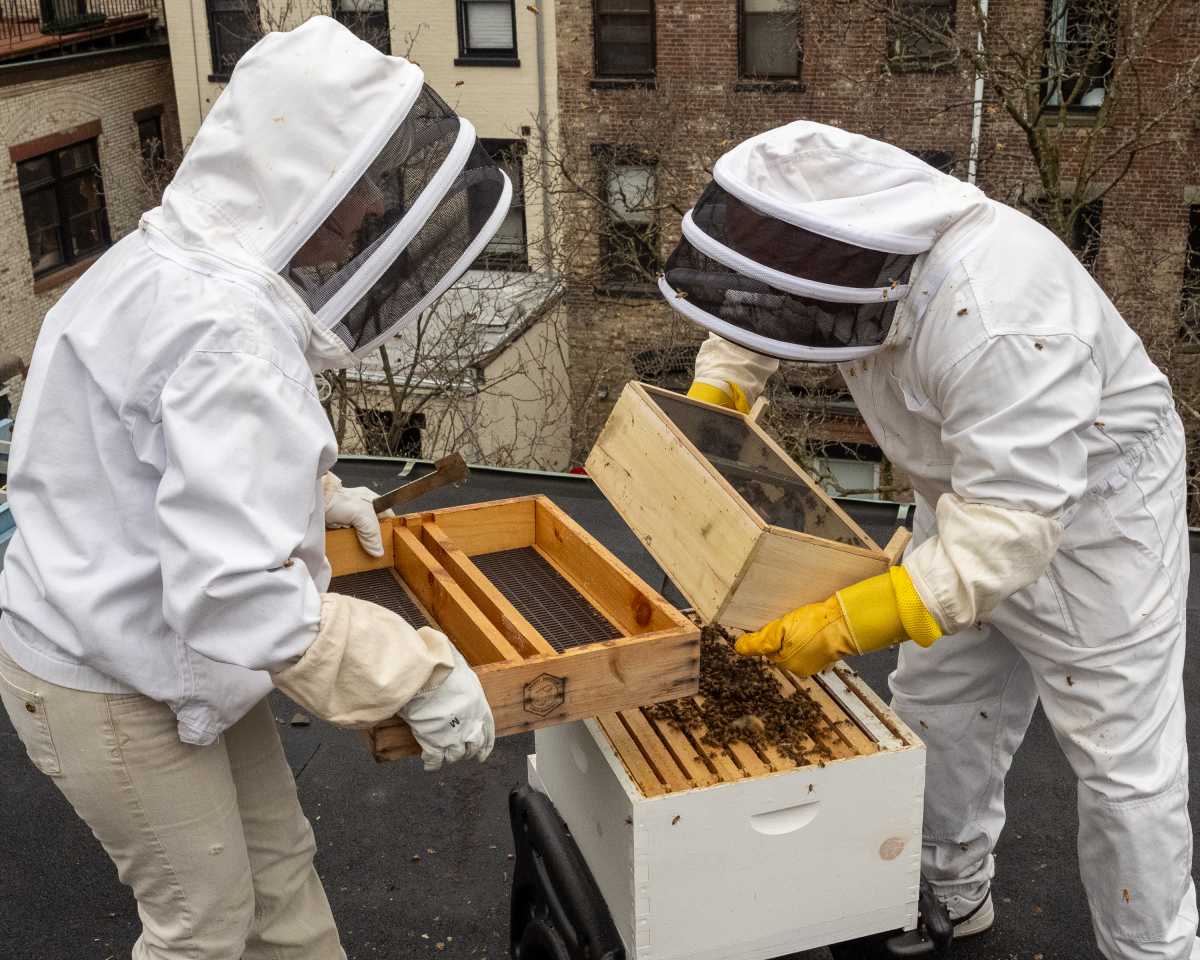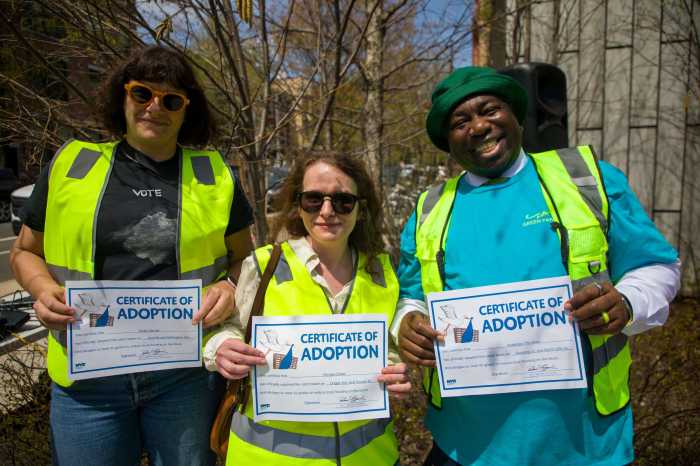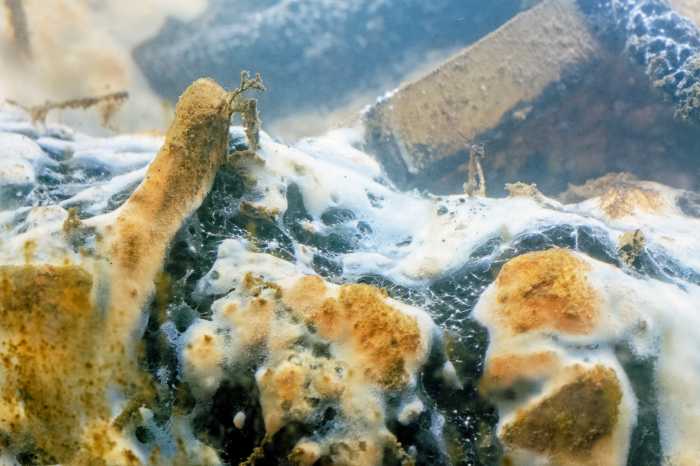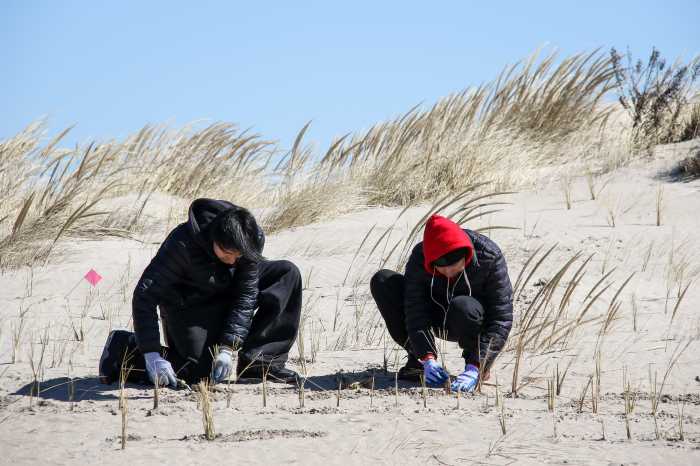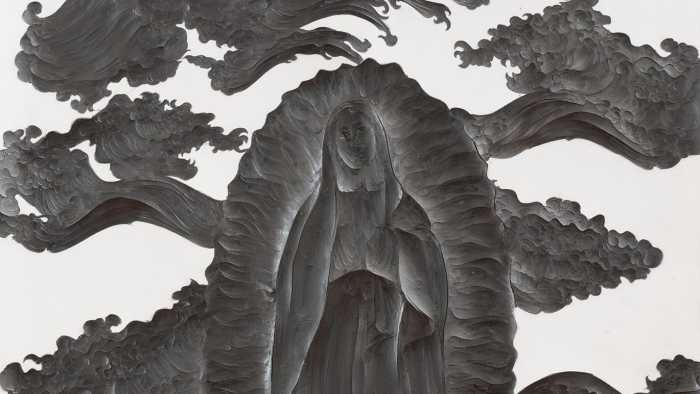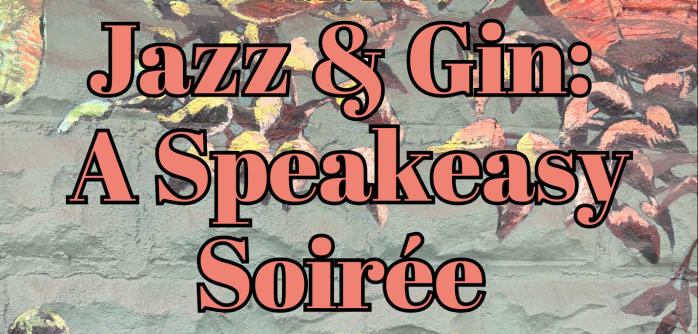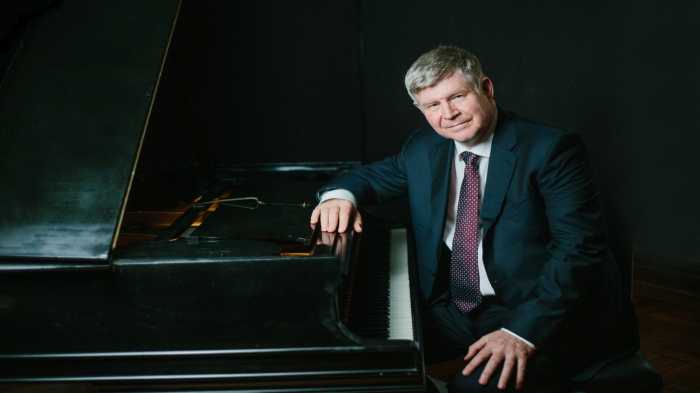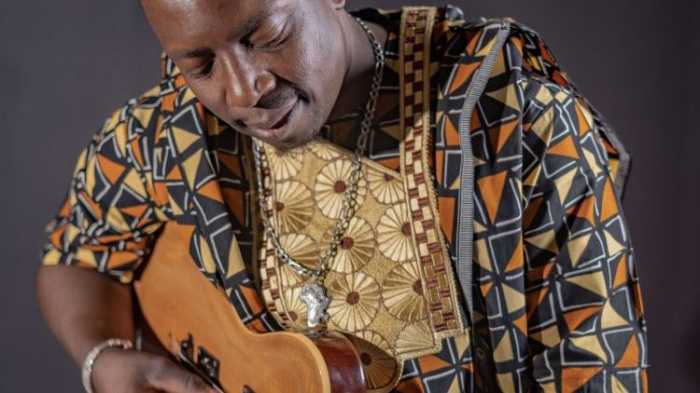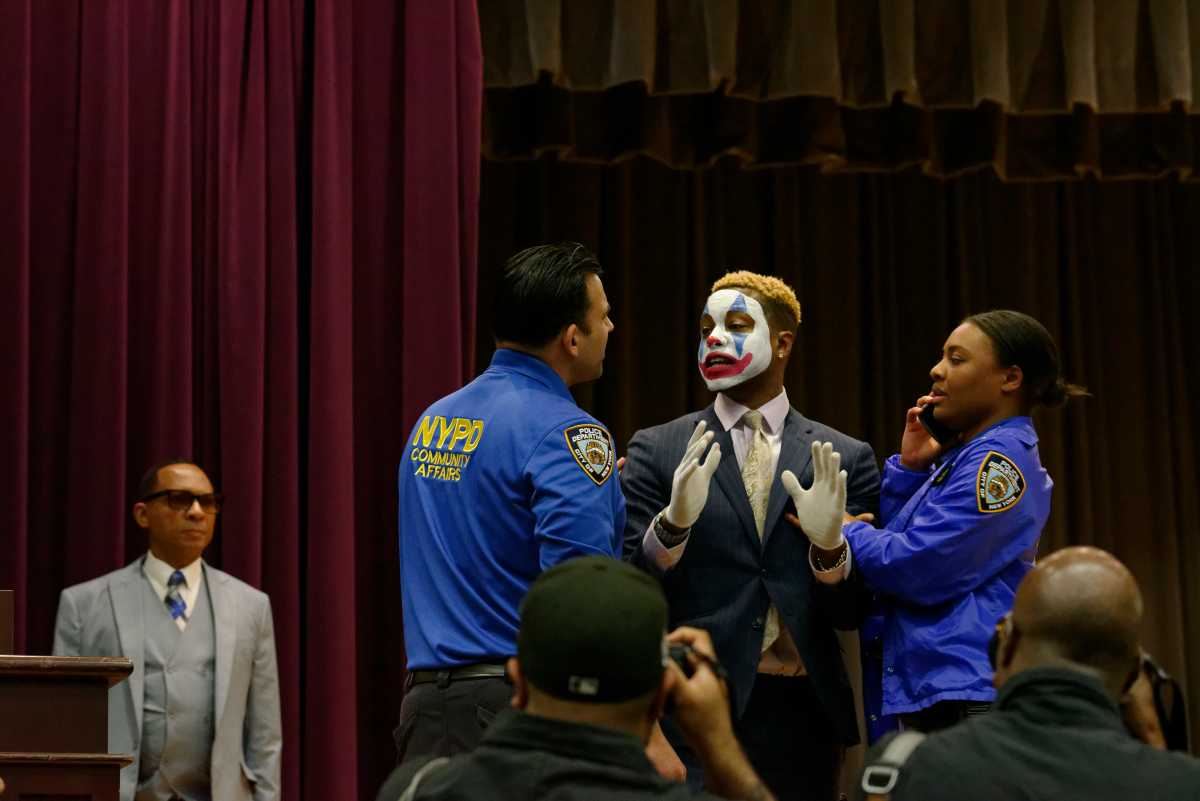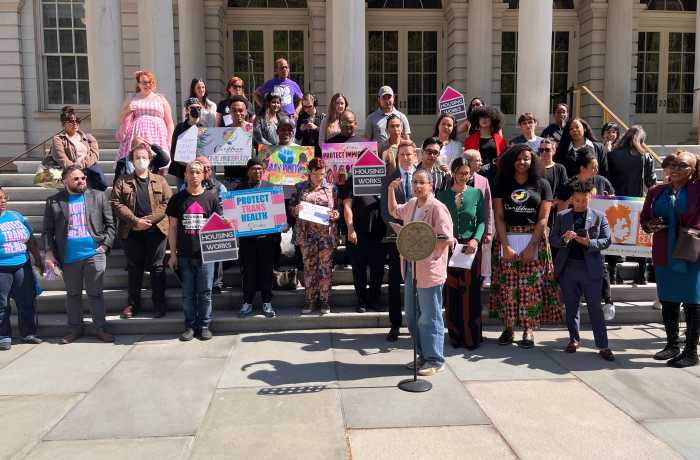It was all about the bees last week for two Park Slope residents who set up a hive on the roof of a Brooklyn brownstone, home to about 12,000 fuzzy pollinators.
Early Friday morning, the beekeepers — Danny Peña and friend Maura — buzzed to Manhattan to pick up a wooden box containing the worker bees and their queen from Andrew Coté, owner of Andrew’s Local Honey and a pioneer in urban beekeeping.
Brooklyn Paper met up with the duo upon their return — Peña joked that they brought the bees back to Brooklyn via the B-line — for an introductory lesson in beekeeping.
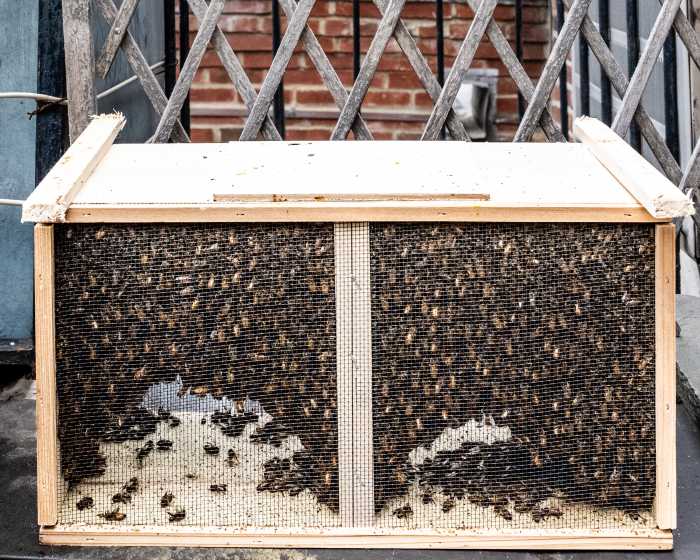
Maura and Peña are part of a growing group of bee enthusiasts in New York City who keep beehives on their balconies, rooftops, or in their gardens. Since 2010 — the year New York City legalized beekeeping — the number of registered beehives with the New York City Department of Health and Mental Hygiene has grown by more than 500%.
New Yorkers who keep non-aggressive honeybees for recreational or commercial purposes must register their hives annually with DOHMH. In 2024, 775 beehives were registered in the city.
Maura’s urban beekeeping journey began in 2014 when her brother pointed out that she had space for a beehive on the deck of her apartment, which extends from her balcony.
“I was like, ‘Yes, I could,'” she said. “And then I started looking into it.”
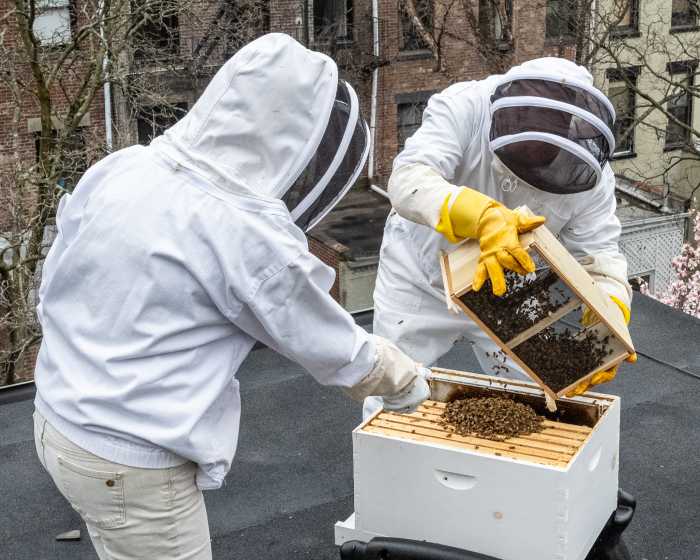
Maura enrolled in a hands-on apprenticeship program offered by the New York City Beekeepers Association. During her apprenticeship, she learned how to manage honeybee colonies in an urban setting, covering topics such as hive building, hive and bee installations, disease prevention and treatment, as well as honey harvesting and extraction.
“If I was going to do it, I wanted to do it in a way that was going to be safe for everybody, and for the bees, especially,” Maura told Brooklyn Paper.
Decked out in sting-proof bee suits, the beekeepers first removed the tin feeder containing sugar water and the queen cage from the wooden box. The queen arrives in a separate box, sealed with a candy plug that feeds and protects her during the introduction to the hive. Once placed inside, the worker bees will eat through the plug — a process that takes about three days — and the queen will be released.
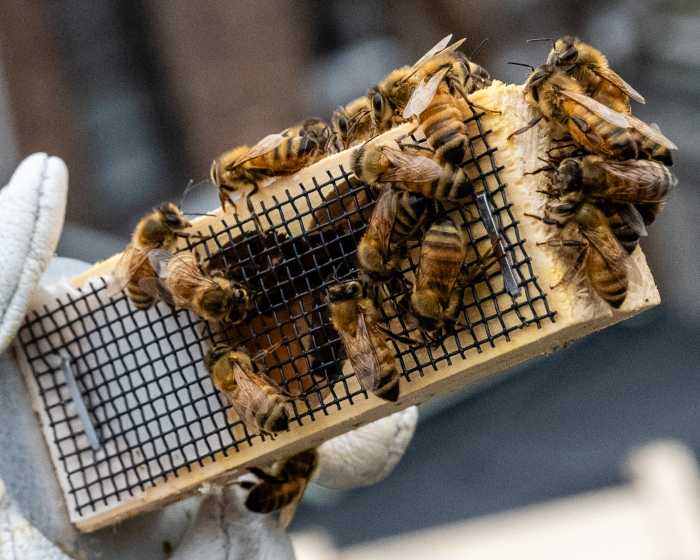
The honey farmers removed a few panels from the hive to create space for the new residents, shaking them into the area and carefully reinserting the panels to avoid crushing any bees. While a few confused stragglers continued to buzz around, they placed the hive-top feeder filled with sugar syrup on top — feeding early-stage bee colonies is crucial, as they often require supplemental feeding to thrive and produce enough wax for the honeycomb.
They then closed the hive box.
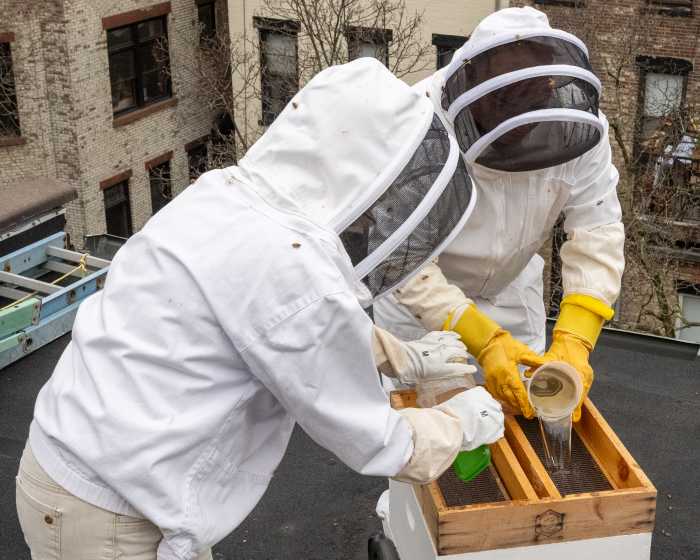
Honey harvesting season runs from mid-July through September, and according to Maura, bees thrive in the “People’s Republic of Park Slope.”
“There’s plenty of food for them,” Maura said, noting that bees fly as far as three miles from their hive to pollinate and collect nectar.
“During Linden season, when the Linden trees are blooming, the honey tastes like Linden,” Peña added.
But sometimes, the bees take “you are what you eat” a bit too literally. Peña said one year, the honey was green.
“We came to find out that it was because they were eating the cotton candy [in Prospect Park],” he said.
It’s buzzworthy that the urban jungle’s ecosystem benefits greatly from bees, which pollinate plants in parks and gardens. Like butterflies and moths, bees are invertebrate pollinators and serve as indicators of a healthy environment and ecosystem. Pollinators are vital to a thriving ecosystem — 90% of wild flowering plants and 75% of food crops depend on pollination for seed and fruit production.
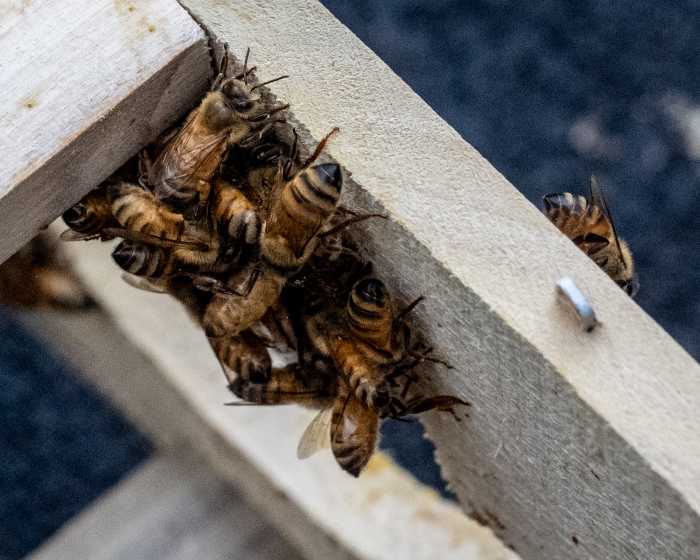
However, according to a nationwide survey by Project Apis — a nonprofit that supports beekeeping science — honey bees are dying at an alarming rate due to the climate crisis, pesticides, land use changes, habitat destruction and invasive species. Bee colony losses averaged more than 50%, with some operations experiencing up to 100% losses over the past year — a development that could threaten food security.
For Peña and Maura, it’s all the more reason to keep Park Slope buzzing with excitement.
“If we lose bees, we lose life as we know it,” Peña said. “We need bees for everything that we eat. I’m just trying to do my little part, keeping bees alive.”


